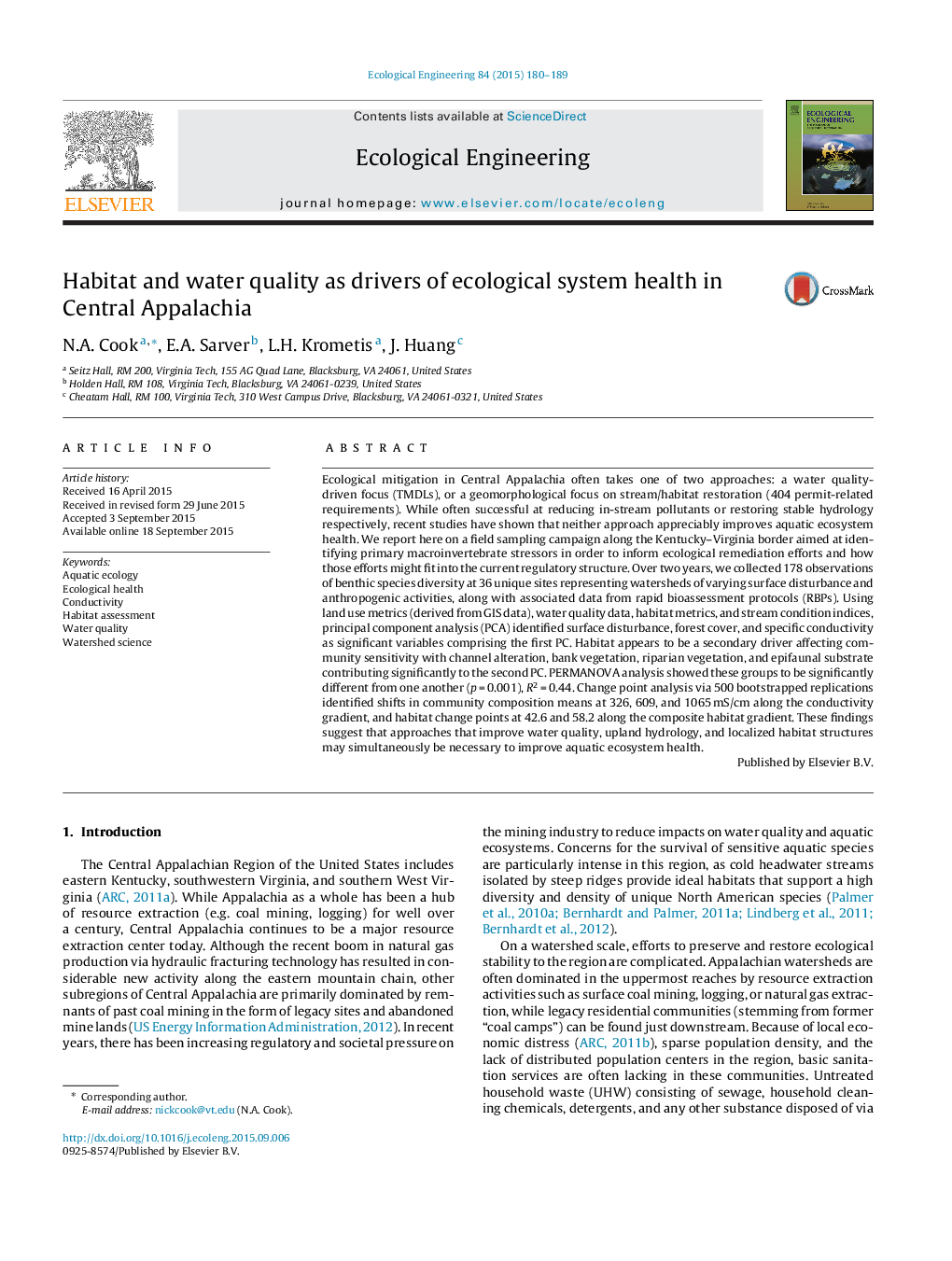| کد مقاله | کد نشریه | سال انتشار | مقاله انگلیسی | نسخه تمام متن |
|---|---|---|---|---|
| 4388781 | 1618015 | 2015 | 10 صفحه PDF | دانلود رایگان |
Ecological mitigation in Central Appalachia often takes one of two approaches: a water quality-driven focus (TMDLs), or a geomorphological focus on stream/habitat restoration (404 permit-related requirements). While often successful at reducing in-stream pollutants or restoring stable hydrology respectively, recent studies have shown that neither approach appreciably improves aquatic ecosystem health. We report here on a field sampling campaign along the Kentucky–Virginia border aimed at identifying primary macroinvertebrate stressors in order to inform ecological remediation efforts and how those efforts might fit into the current regulatory structure. Over two years, we collected 178 observations of benthic species diversity at 36 unique sites representing watersheds of varying surface disturbance and anthropogenic activities, along with associated data from rapid bioassessment protocols (RBPs). Using land use metrics (derived from GIS data), water quality data, habitat metrics, and stream condition indices, principal component analysis (PCA) identified surface disturbance, forest cover, and specific conductivity as significant variables comprising the first PC. Habitat appears to be a secondary driver affecting community sensitivity with channel alteration, bank vegetation, riparian vegetation, and epifaunal substrate contributing significantly to the second PC. PERMANOVA analysis showed these groups to be significantly different from one another (p = 0.001), R2 = 0.44. Change point analysis via 500 bootstrapped replications identified shifts in community composition means at 326, 609, and 1065 mS/cm along the conductivity gradient, and habitat change points at 42.6 and 58.2 along the composite habitat gradient. These findings suggest that approaches that improve water quality, upland hydrology, and localized habitat structures may simultaneously be necessary to improve aquatic ecosystem health.
Journal: Ecological Engineering - Volume 84, November 2015, Pages 180–189
